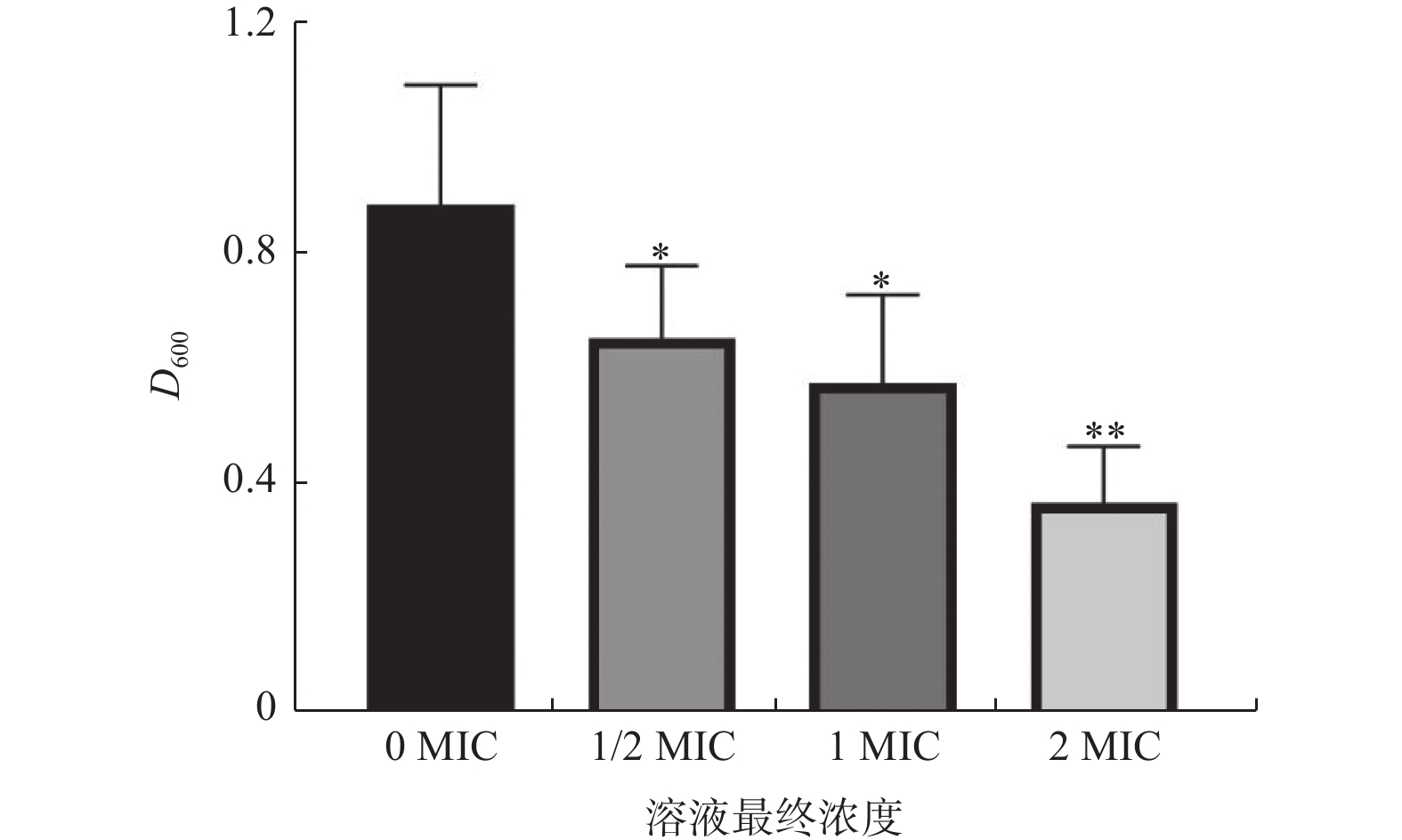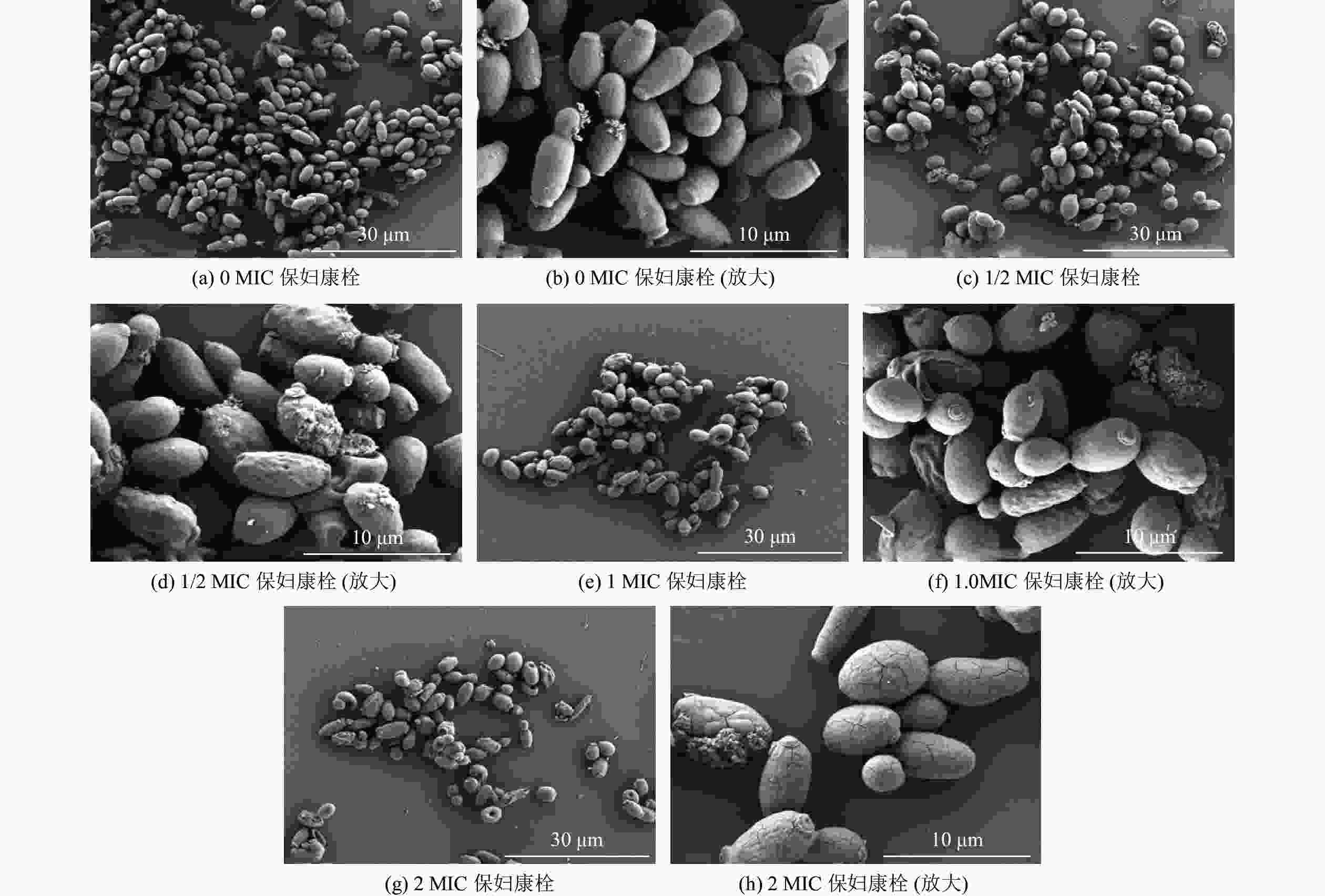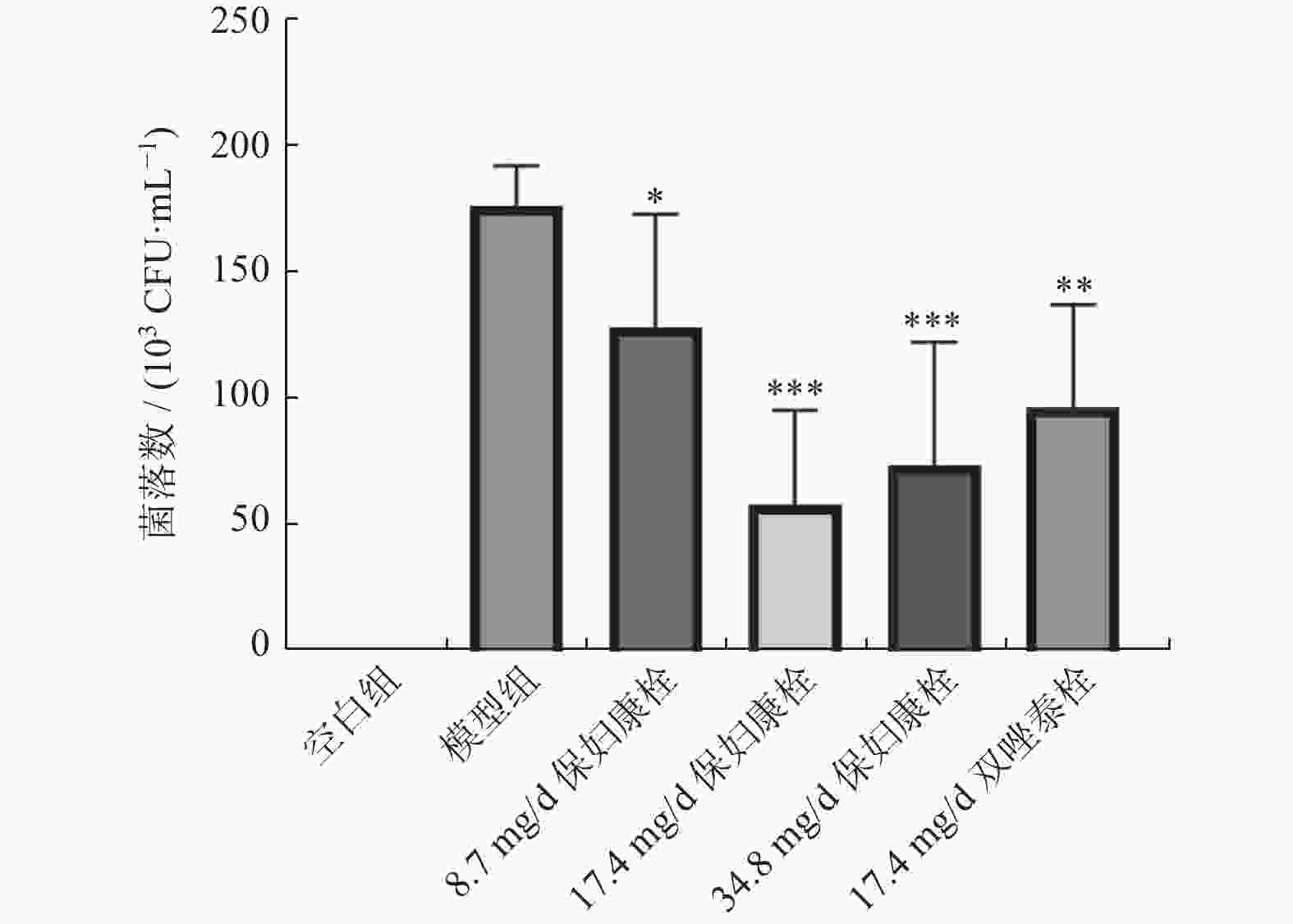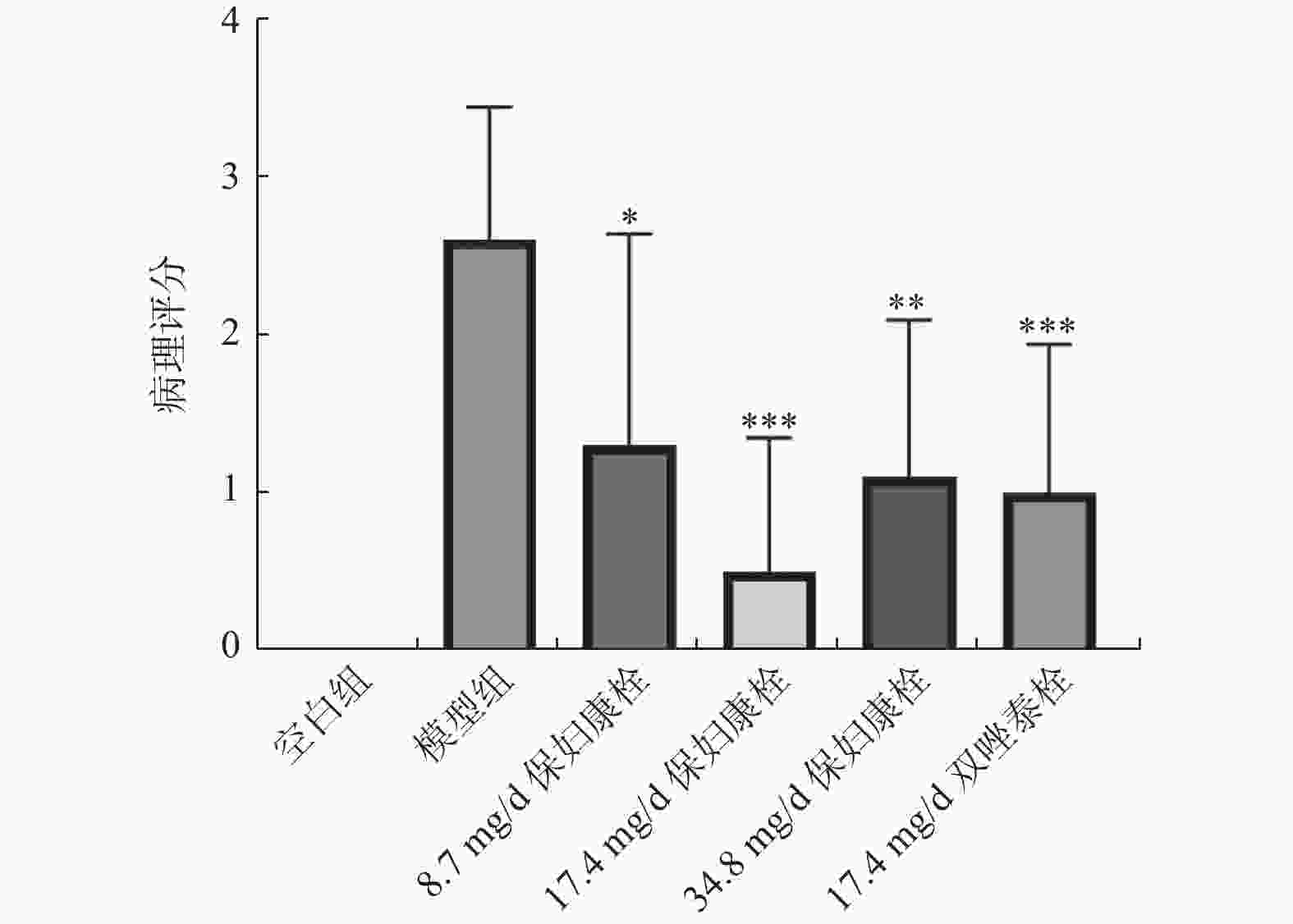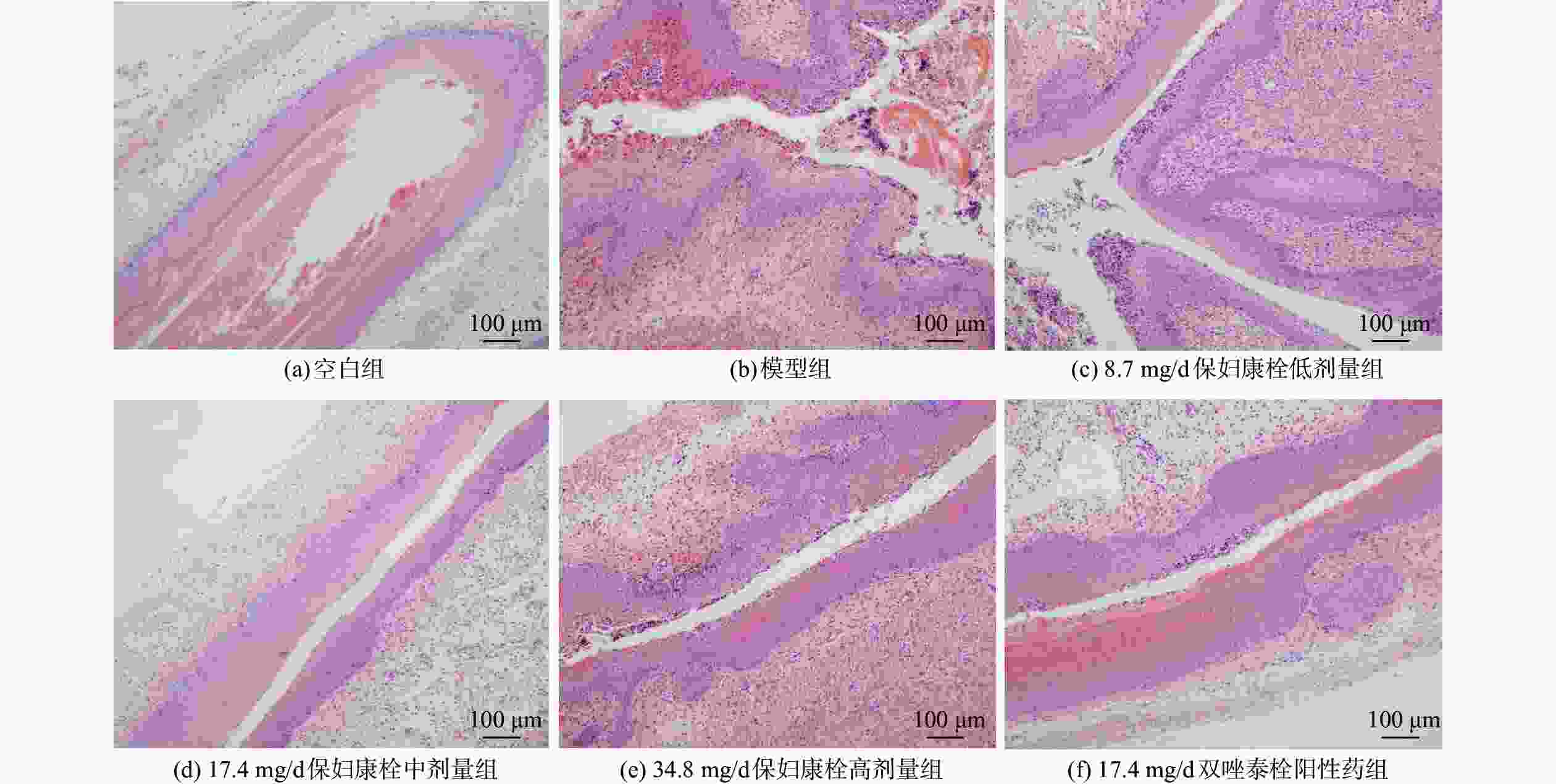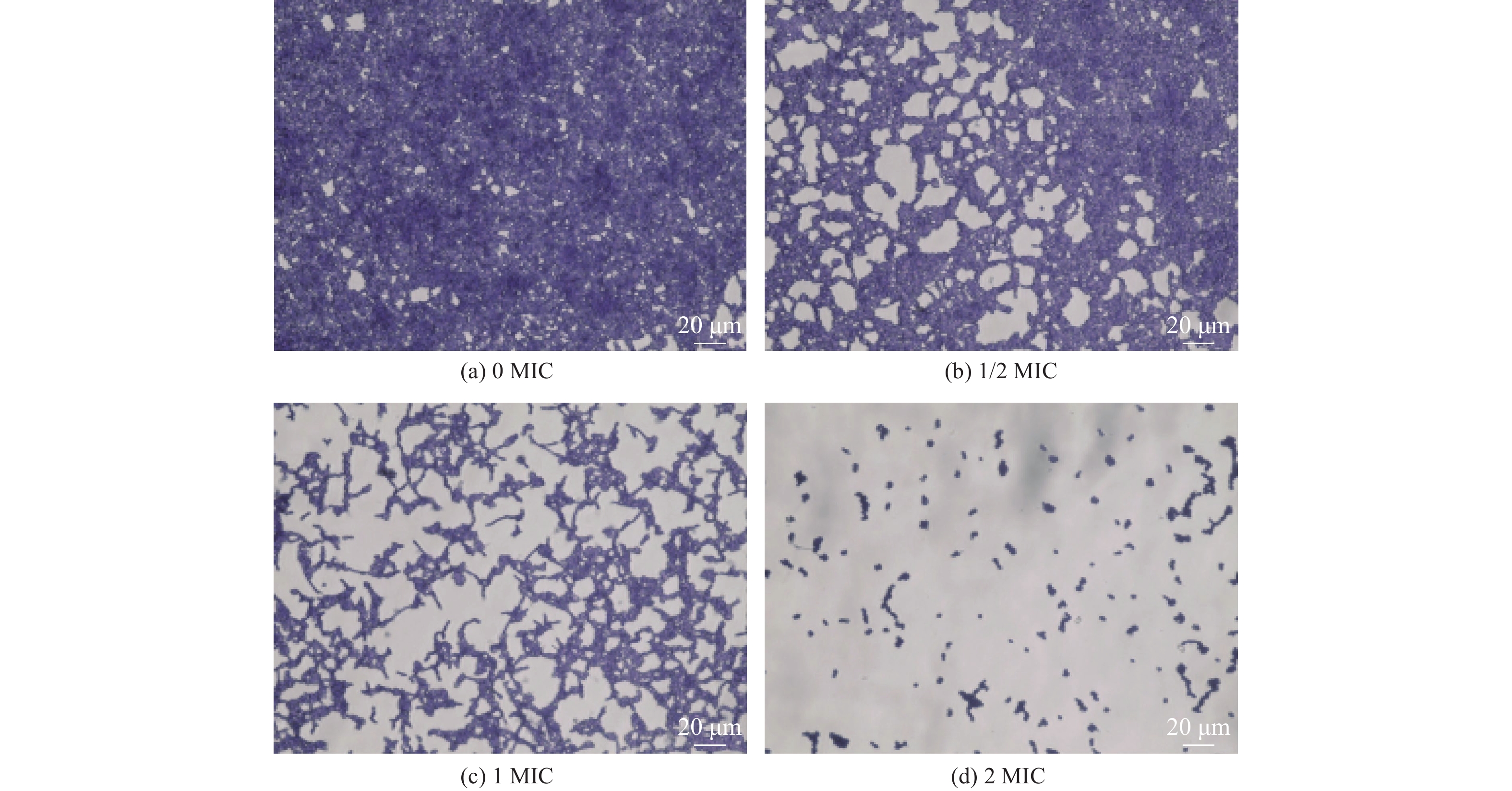Therapeutic effect of Bafukang suppository on Candida tropicalis infection
-
摘要: 为验证保妇康栓体内外抗热带假丝酵母菌的药效,从临床收集热带念珠菌16株,采用微量肉汤稀释法测定保妇康栓对热带假丝酵母菌的最低抑菌浓度(MIC),用结晶紫染色法测定对生物膜形成的影响,用扫描电镜(SEM)观察对菌体结构的影响。构建小鼠阴道热带假丝酵母菌体内感染模型,观察给予保妇康栓后阴道荷菌量的变化及阴道病理的改变。结果表明保妇康栓可抑制热带假丝酵母菌的增殖和生物膜的形成,破坏菌体细胞膜和细胞壁,并有效缓解小鼠阴道炎症,在体外对热带假丝酵母菌的生长具有显著抑制作用,在体内对热带假丝酵母菌感染致阴道炎有明显的改善作用。Abstract: To verify the efficacy of Baofukang suppository against Candida tropicalis in vivo and in vitro, a total of 16 clinical strains of Candida tropicalis were collected. The minimum inhibitory concentration (MIC) of Baofukang suppository against Candida tropicalis was determined using microbroth dilution method. The impact on biofilm formation was evaluated by crystal violet staining method, and the alternations in fungus structure was observed using scanning electron microscope (SEM). The vaginal Candida tropicalis infection model in mice was established, changes in vaginal fungus load and vaginal pathology after giving Baofukang suppository were monitored. The results show that Baofukang suppository can inhibit the proliferation and biofilm formation of Candida tropicalis, destroy the cell wall and membrane of Candida tropicalis, effectively relieve vaginal inflammation in mice. Baofukang suppository had obvious inhibitory effect on the growth of Candida tropicalis in vitro and ameliorative effect on vaginitis caused by Candida tropicalis infection in vivo.
-
表 1 药敏实验结果
Table 1. Results of drug sensitivity test
菌株编号 克霉唑MIC值/(μg·mL−1) 保妇康栓MIC值/(mg·mL−1) 10705 0.50 0.64 10808 8.00 0.16 0121042 0.50 0.16 17040 0.50 0.64 09038 0.50 0.64 07703 4.00 0.16 10002 4.00 0.16 05058 0.03 0.32 19021 1.00 0.64 07073 1.00 0.32 18004 0.03 0.32 08003 0.06 0.64 0121056 0.25 0.32 ATCC750 0.50 0.16 0119043 4.00 0.16 09020 0.25 1.28 23601 0.25 2.56 -
[1] BERTOLINI M, RANJAN A, THOMPSON A, et al. Candida albicans induces mucosal bacterial dysbiosis that promotes invasive infection[J] . PLoS Pathogens,2019,15(4):e1007717. doi: 10.1371/journal.ppat.1007717 [2] LAMOTH F, LOCKHART S R, BERKOW E L, et al. Changes in the epidemiological landscape of invasive candidiasis[J] . Journal of Antimicrobial Chemotherapy,2018,73(S1):i4 − i13. [3] FAN X, XIAO M, ZHANG D, et al. Molecular mechanisms of azole resistance in Candida tropicalis isolates causing invasive candidiasis in China[J] . Clinical Microbiology and Infection,2019,25(7):885 − 891. doi: 10.1016/j.cmi.2018.11.007 [4] PRISTOV K E, GHANNOUM M A. Resistance of Candida to azoles and echinocandins worldwide[J] . Clinical Microbiology and Infection,2019,25(7):792 − 798. doi: 10.1016/j.cmi.2019.03.028 [5] LEE Y, PUUMALA E, ROBBINS N, et al. Antifungal drug resistance: Molecular mechanisms in Candida albicans and beyond[J] . Chemical Reviews,2021,121(6):3390 − 3411. doi: 10.1021/acs.chemrev.0c00199 [6] JAFRI H, AHMAD I. Thymus vulgaris essential oil and thymol inhibit biofilms and interact synergistically with antifungal drugs against drug resistant strains of Candida albicans and Candida tropicalis[J] . Journal de Mycologie Médicale,2020,30(1):100911. [7] CHEN M W, WANG S P, TAN M, et al. Applications of nanoparticles in herbal medicine: Zedoary turmeric oil and its active compound β-elemene[J] . The American Journal of Chinese Medicine,2011,39(6):1093 − 1102. doi: 10.1142/S0192415X11009421 [8] CHEN Z X, XU Q Q, SHAN C S, et al. Borneol for regulating the permeability of the blood-brain barrier in experimental ischemic stroke: preclinical evidence and possible mechanism[J] . Oxidative Medicine and Cellular Longevity,2019,2019:2936737. [9] MURPHY S E, BICANIC T. Drug resistance and novel therapeutic approaches in invasive candidiasis[J] . Frontiers in Cellular and Infection Microbiology,2021,11:759408. doi: 10.3389/fcimb.2021.759408 [10] LI T, NIU X X, ZHANG X, et al. Baofukang suppository promotes the repair of vaginal epithelial cells in response to Candida albicans[J] . AMB Express,2016,6(1):109. doi: 10.1186/s13568-016-0281-1 [11] YUE H Z, XU X L, HE S S, et al. Antifungal mechanisms of a Chinese herbal medicine, Cao Huang Gui Xiang, against Candida species[J] . Frontiers in Pharmacology,2022,13:813818. doi: 10.3389/fphar.2022.813818 [12] LOHSE M B, GULATI M, JOHNSON A D, et al. Development and regulation of single- and multi-species Candida albicans biofilms[J] . Nature Reviews Microbiology,2018,16(1):19 − 31. doi: 10.1038/nrmicro.2017.107 [13] RODRÍGUEZ-CERDEIRA C, GREGORIO M C, MOLARES-VILA A, et al. Biofilms and vulvovaginal candidiasis[J] . Colloids and Surfaces B: Biointerfaces,2019,174:110 − 125. doi: 10.1016/j.colsurfb.2018.11.011 [14] SENTHILGANESH J, KUPPUSAMY S, DURAIRAJAN R, et al. Phytolectin nanoconjugates in combination with standard antifungals curb multi-species biofilms and virulence of vulvovaginal candidiasis (VVC) causing Candida albicans and non-albicans Candida[J] . Medical Mycology,2022,60(2):myab083. doi: 10.1093/mmy/myab083 [15] 荆翠清. 双唑泰栓联合伊曲康唑治疗念珠菌性阴道炎106例分析[J] . 中外女性健康研究, 2018, 5(10): 91, 166. -





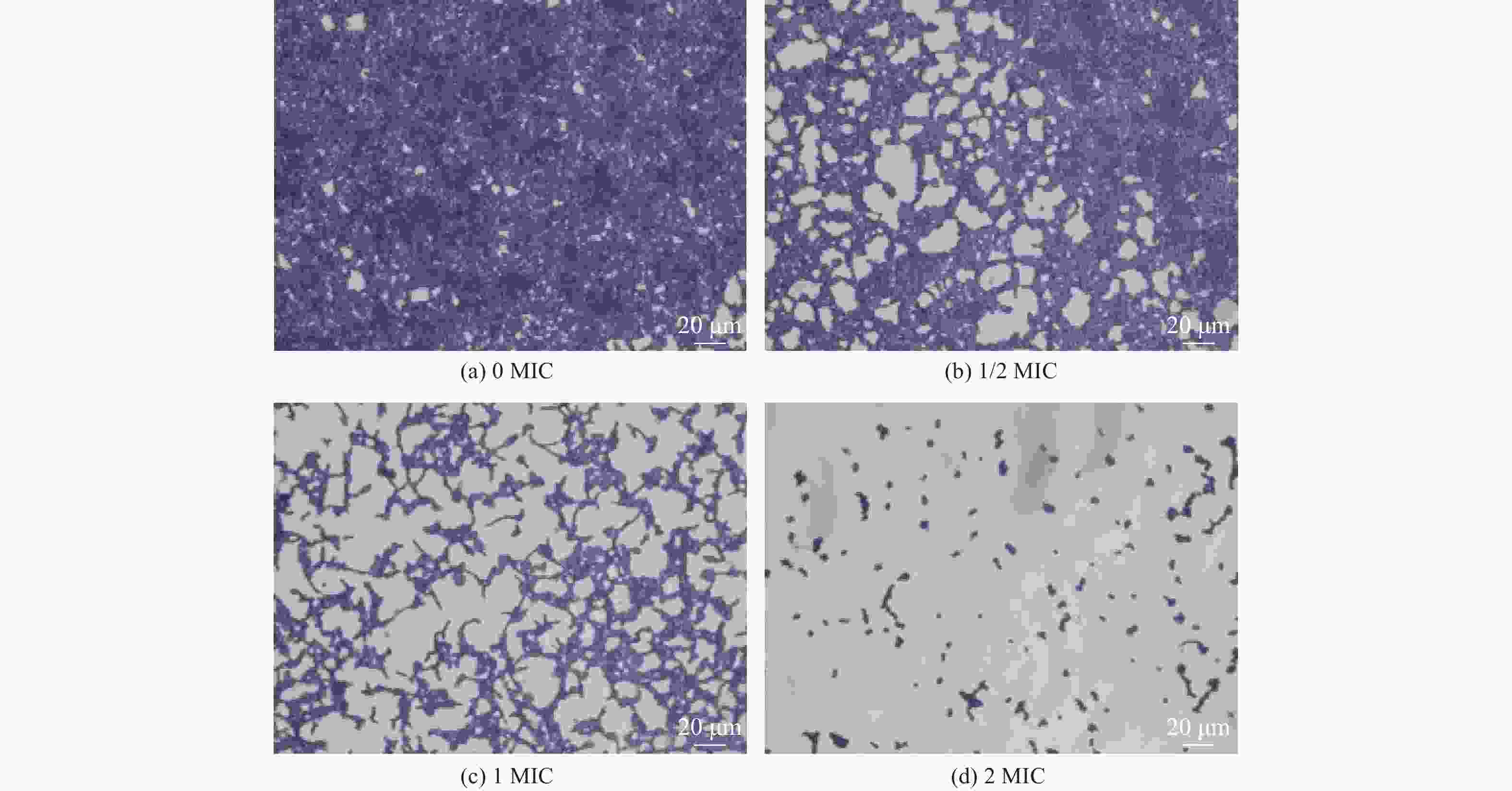
 下载:
下载:
